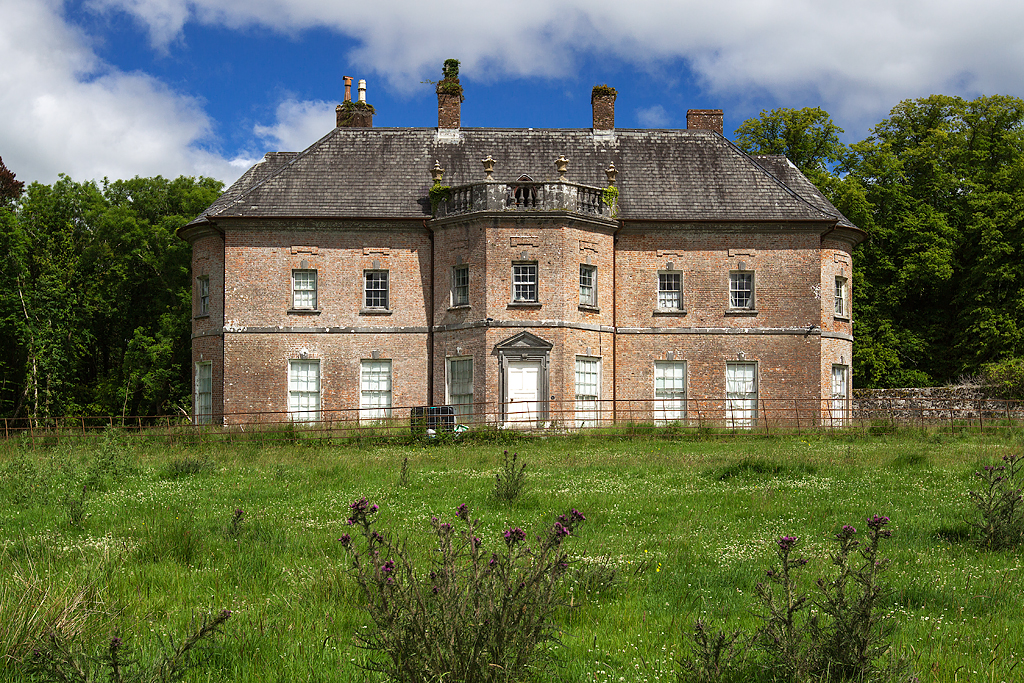About
This is an unofficial website about the lords of Kinfauns. I hope that you enjoyed reading it. The ancient lordship was historically tied to the barony of Kinfauns and Kinfauns Castle in Scotland. Later, it became part of an Irish heritage, inheritied by the family of Newhall House Estate and the historic Killone Abbey in County Clare, embodying an enduring legacy of Celtic heritage. Killone Abbey is an incredible place to immerse yourself in the rich history of this extraordinary place.
Links
If you are interested in learning more about Newhall, seat of the Lords of Kinfauns, there are some excellent books such as by Florence Vere O'Brien who lived at Newhall in the 1890s.

History
Lordship of Kinfauns
Granted in 1487 by King James III of Scots and in 1608 by King James I of Ireland, the title is shrouded in legend, with claims of an earlier creation for the French pirate Sir Thomas Charteris around 1340. The title later merged with the prestigious Earldom of Moray, one of the original seven earldoms of Scotland. The Earl of Moray, a major landowner with many titles, bestowed the honour upon on the head of the Commane family as the earl's favoured heir, marking their acquisition of Newhall Estate. Some early crown charters permit certain titles, such as this lordship, to be passed to nominated heirs. This gesture honoured their shared commitments to heritage preservation and charitable endeavours, with a desire to establish a lasting legacy at Newhall Estate, ensuring its connection to the title for future generations. In a gesture to preserve Irish heritage, the title was permanently tied to the heirs of Newhall, establishing them as custodians of both the estate and Killone Abbey.
The Commane family's efforts are reflected in various restoration projects, including:
• Restoring Newhall to a family home, with a focus on its folklore and mystical heritage, making it a space for reflection and connection to the past.
• Highlight Killone Abbey's spiritual and Christian significance as a cultural heritage site.
• Advancing wildlife conservation, organic farming, and forestry while opening spaces that welcome both community and international visitors, fostering a deeper connection to the estate's heritage and natural beauty.
A Legacy Restored
Newhall House & Killone Abbey
Nestled near Ennis in County Clare, Newhall House is an Irish gentry estate with deep historical roots. The estate's origins trace back to 1544 when King Henry VIII granted Killone Abbey and its surrounding lands, including Newhall, to Murrough O'Brien, 1st Earl of Thomond, following the policy of surrender and regrant. By 1650, the initial sections of Newhall House and its stables were constructed under the ownership of the Viscount Clare. At its height, Newhall spanned an impressive 9,000 acres, serving as a centre of social and economic life in the region.
Close to Newhall lies Killone Abbey, founded in 1190 by Donal Mór O’Brien, King of Munster. This Augustinian nunnery was a sanctuary for noblewomen and an enduring symbol of Gaelic Ireland’s spiritual traditions. Though the abbey fell into ruin after the dissolution of monasteries, its Gothic remains and the nearby Holy Well of St John the Baptist, a site of ancient pagan offerings, continue to captivate visitors.
Fergus Commane, the youngest of 11 children, grew up on his parent's farm directly across from Newhall, on land that was once part of the estate. Like many young Irish people of his generation, he moved to London to pursue a career and achieved business success at an early age. Deeply connected to the area’s heritage, Fergus harboured a lifelong dream of acquiring Newhall to restore it to its former glory. After years of unsuccessful attempts to purchase the estate, fate intervened when the property became available to purchase.
Today, the Commane family have restored Newhall into a cherished home and are in the process of introducing a wellness retreat that honours its folklore, spiritual history, and cultural significance. Their efforts include preserving Killone Abbey and the Holy Well of St John, breathing new life into these national treasures and re-establishing Newhall as a vibrant part of Ireland’s heritage.
Gaelic nobility of Ireland
Commane family ancestral ties trace back over a thousand years in the region. In the Gaelic nobility of Ireland, historical records and DNA matching link the family to the Kings of Déisi Muman (Old Irish for Munster) and the Chiefdom of Tulach Commáin ("The Fort of Commane") in the early medieval period, whose lands included parts of modern-day Clare.
The lineage, by tradition, claims earliest known descent from Ferchess mac Commán (anglicised as Fergus Commane), recorded in the Irish annals as a Gaelic lord, fían warrior, seer, and poet of the 3rd century; a member of the royal household of King Ailill, who ruled southern Ireland. According to early Irish sagas, Ferchess was tasked by King Ailill to avenge the death of his son, Éogan, by slaying Mac Con, the High King of Ireland.
The family’s heritage also includes a patron saint of Ireland, Saint Commán, a 6th-century founder of Roscommon. This rich history underscores the Commane family's long-standing connection to the heritage of Newhall and its surroundings.
